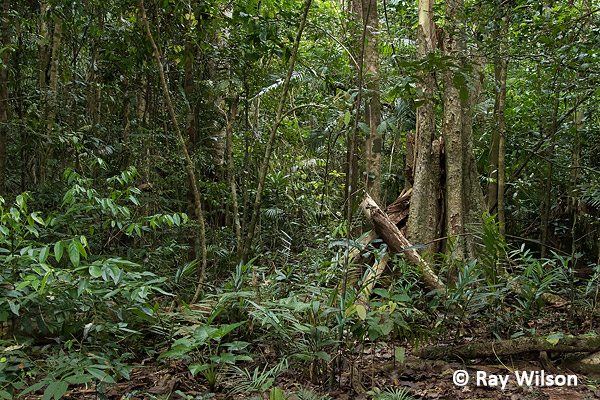
- Home
- Photography Tours
- Diary / Blog
- Galleries
- Foreign Trips
- Tasmania 2016
- NE Queensland 2016
- Western Alps 2016
- NE Spain 2016
- Australia's Wet Tropics 2015
- Australia's Top End 2015
- SW Australia 2015
- Switzerland 2015
- Andalucia 2015
- Belize 2015
- Australia 2014
- Switzerland 2014
- Belize 2014
- Bahama Islands 2014
- Switzerland 2013
- Ecuador 2012-2013
- Florida 2011-2012
- Vancouver Island 2011
- Australia 2010
- Peru 2008
- Bulgaria 2007
- Lesvos 2006
- California 2006
- New Zealand 2005
- Extremadura 2005
- Goa, India 2004
- The Gambia 2003
- About
Northeastern Queensland, Australia
September - November 2016
Part 9
Atherton Tablelands, QLD, Australia
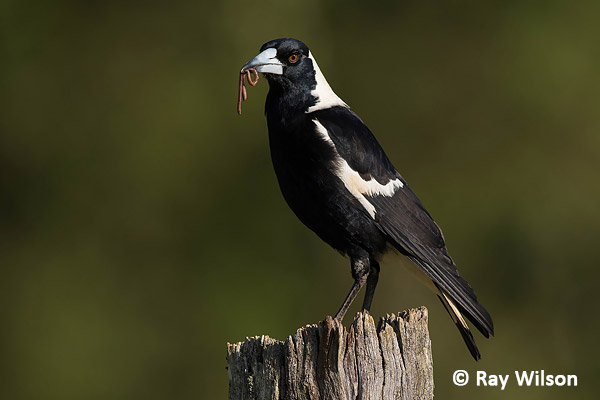
Australian Magpie (Gymnorhina tibicen)
This Australian Magpie was industriously going back and forth collecting worms to feed its chicks on a nearby nest. I'm actually very surprised it allowed me to stand so close without dive-bombing me!
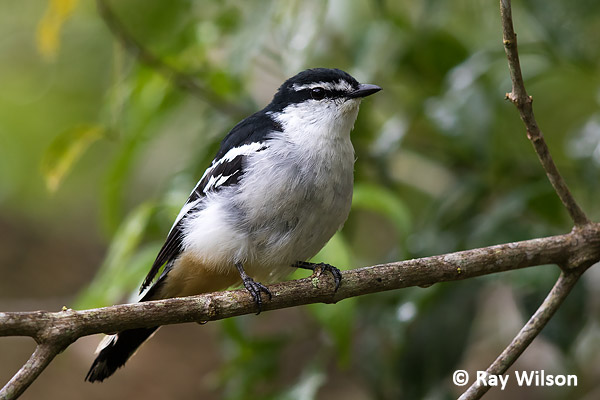
Varied Triller (Lalage leucomela)
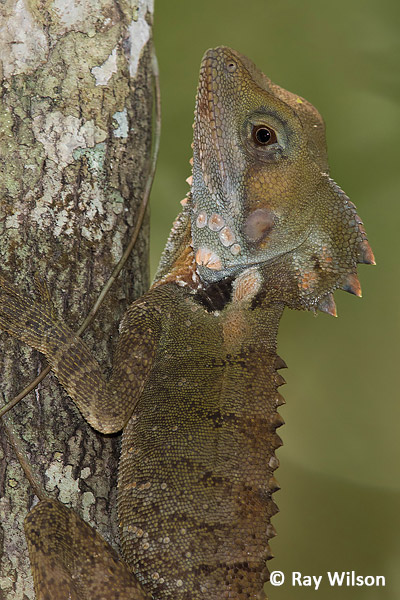 Boyd's Forest Dragon (Hypsilurus boydii) |
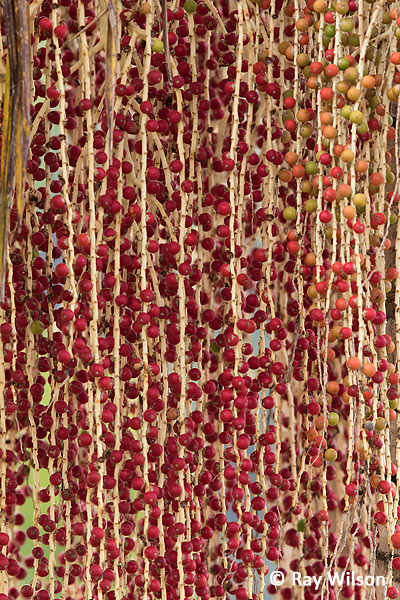 Alexandria Palm (Archontophoenix alexandrae) fruits |
The fruits of the Alexandria Palms not only produced a beautiful bead curtain effect that I couldn't resist photographing, but were also very popular with a variety of frugivorous birds. This tree was so popular, in fact, that it was completely stripped of its fruit in just one day!
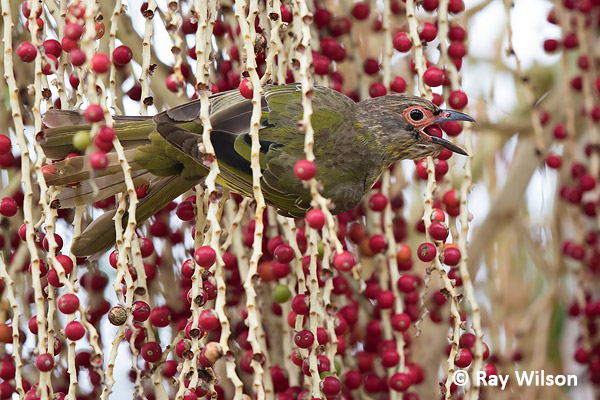
immature male Figbird (Sphecotheres vieilloti) eating the fruit of Alexandria Palm (Archontophoenix alexandrae)
It's funny how I travelled halfway around the world and end up photographing a species that breeds on the gravel ponds at the back of my house in the UK, but it is not often you see such a large flock of Great Crested Grebes in breeding plumage so it just had to be done!
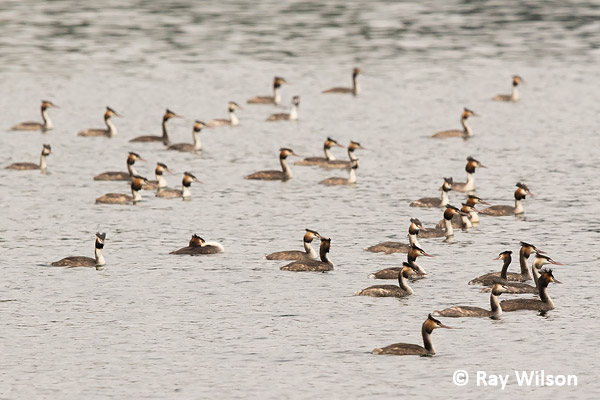
part of a flock of 150 Great Crested Grebes (Podiceps cristatus australis)
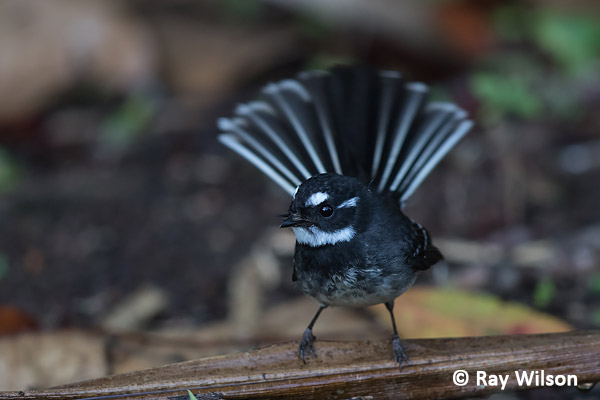
Grey Fantail (Rhipidura albiscapa keasti)
I spent a few fun mornings photographing Grey Fantails. They may be one of the commonest birds in eastern Australia but they are definitely one of my favourites. They just have so much character and are usually one of the most confiding and fearless of birds, viewing humans as a mobile insect scarer to be followed around and swooping down to catch any flies disturbed by your movements...Very handy when the March Flies are trying to take chunks out of you!
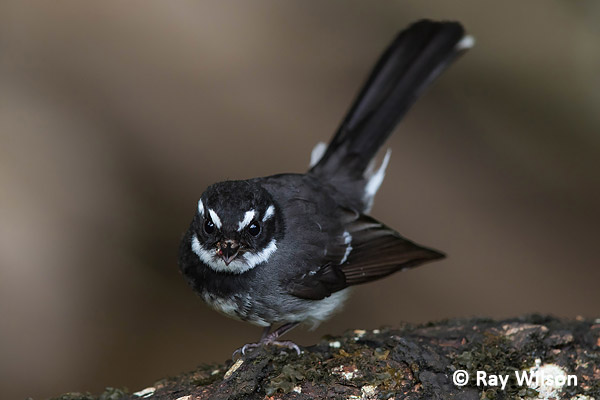
Grey Fantail (Rhipidura albiscapa keasti)
The keasti race found in the Wet Tropics of northeastern Queensland is very distinctive and their almost black-and-white plumage is much darker than the Grey Fantails found elsewhere in Australia.
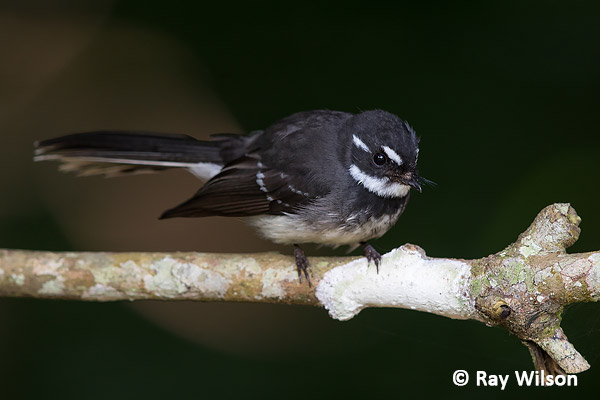
Grey Fantail (Rhipidura albiscapa keasti)
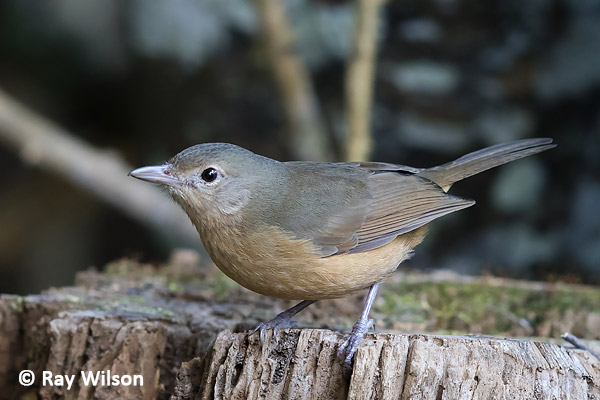
Little Shrike-thrush (Colluricincla harmonica)
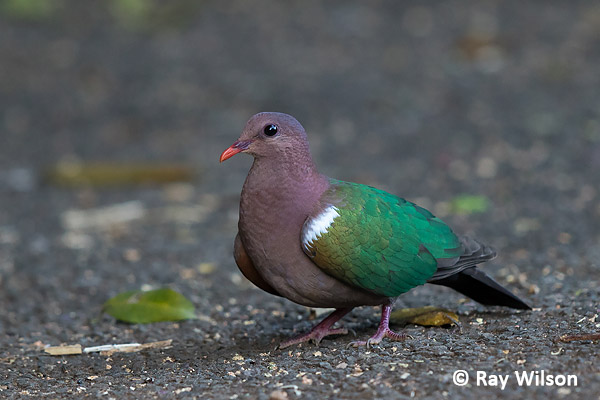
Pacific Emerald Dove (Chalcophaps longirostris)
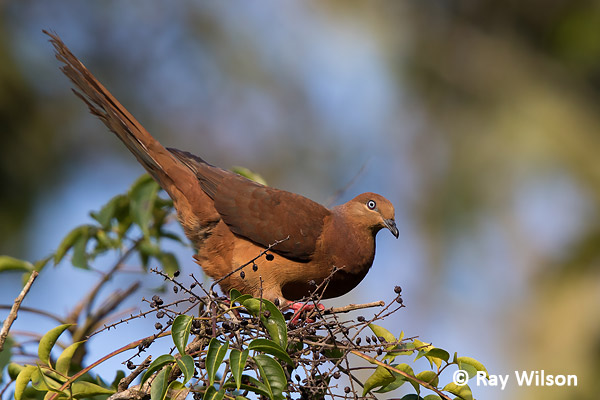
Brown Cuckoo-dove (Macropygia phasianella)
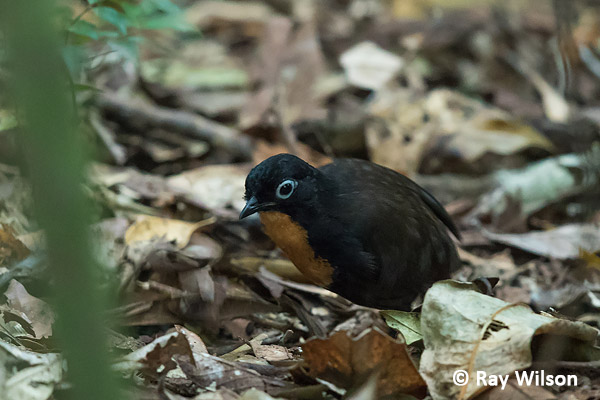
female Chowchilla (Orthonyx spaldingii)
For those who have never been in a tropical rainforest, the photo below shows the density of vegetation that you have to contend with. Not much light reaches the forest floor there even at midday and, while they may be the most biodiverse habitat on the planet, wildlife photography is never easy in such dense forests and is always a challenge, especially for terrestrial species such as Chowchillas.
Typical rainforest habitat
Ray Wilson owns the copyright of all images on this site.
They may not be used or copied in any form without prior written permission.
raywilsonphotography@googlemail.com
